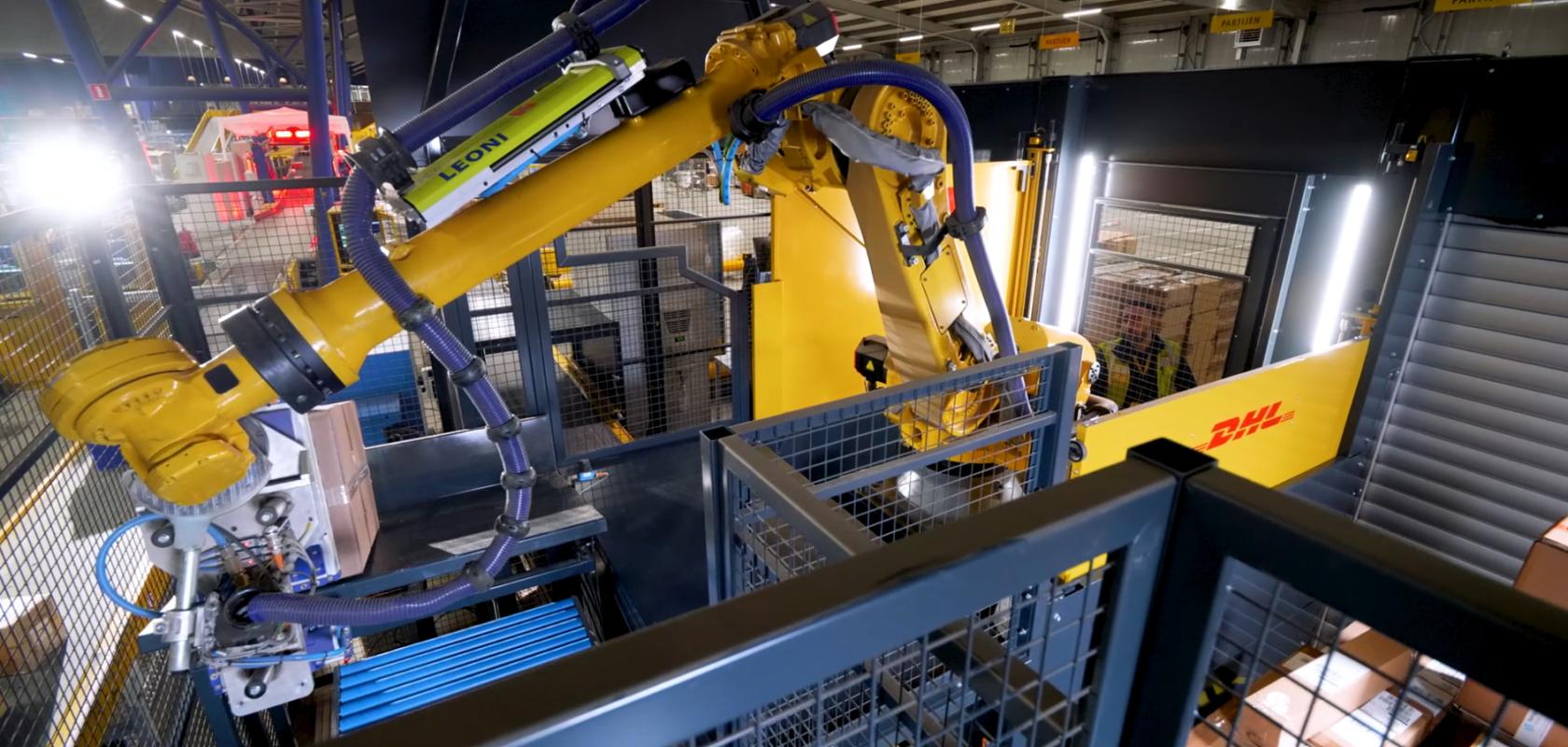AWL’s intelligent robotic vision system, the RObotic DEpalletiser (RODE) recognises the positions of individual and randomly-arranged parcels before flipping and picking them, then deciding what to pick next.
The number of parcel shipments sent in Germany rose to 4.15bn in 2022, according to the German Parcel and Express Logistics Association who estimate the number is likely to continue rising and will reach 4.9bn by 2027.
When you combine these figures with the logistics sector’s increasingly dramatic personnel shortage, meanwhile, it makes a case for the urgent need for a fast and reliable solution. What’s more, the inherent seasonal volume volatility in the market means any solution must remain flexible enough to cope during busy periods.
800 parcels per hour in Rotterdam
At DHL’s eCommerce distribution centre in Rotterdam, parcel processing capacity went up as far as 800 parcels per hour, thanks to the use of a combination of 2D, 3D, AI and robotic solutions, even when the packages are arranged in a random, unorganised manner. AWL’s RObotic DEpalletiser (RODE for short) uses two of IDS Imaging Development Systems’ Ensenso 3D cameras to provide the image data to automatically destack packaged goods like cartons, bags and containers from pallets without any delay, even covering any extra shifts during peak hours or periods such as the busy Christmas season.
The automation process frees up staff to spend more of their time on qualified tasks such as consignment processing or customer enquiries – the tasks that still need a very human brain and voice – and away from physically or ergonomically demanding tasks and risk of injury.
Automatic parcel selection
In order the achieve its task, the robot parcel picker must first recognise the position of all objects in a three-dimensional space, select a package to pick up and then determine the best gripping position, while avoiding collisions. “This intelligent robotic solution integrates AI image processing and high-tech technology,” said AWL R&D manager, Sander Lensen. “The system recognises and can flip the items to ensure that the required long side is leading.”
In order to accomplish this, the RODE system utilises its two Ensenso 3D cameras to provide both 3D and 2D information of whatever products are on the 1200 x 1200mm pallet, up to a maximum height of 2400mm. Communicating with an image processing system, the depalletiser identifies each package individually and determines the best gripping position before picking it up.
“The intralogistics market is a growth market,” said Lensen. “The number of robot solutions required will increase rapidly in the coming years. The type of products that need to be recognised will change constantly. This will be a challenge for all components and the demands on the camera.”


